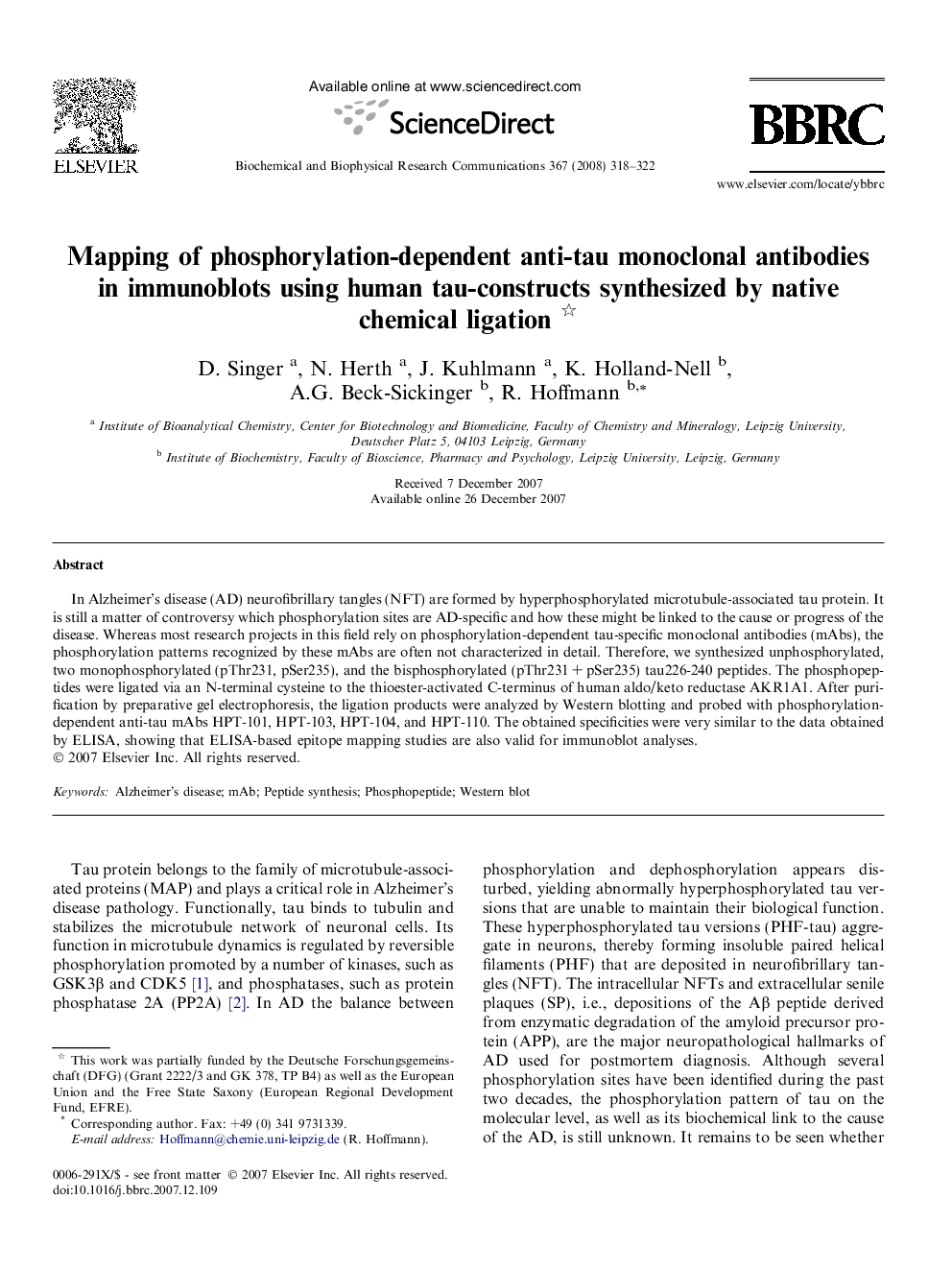| Article ID | Journal | Published Year | Pages | File Type |
|---|---|---|---|---|
| 10766735 | Biochemical and Biophysical Research Communications | 2008 | 5 Pages |
Abstract
In Alzheimer's disease (AD) neurofibrillary tangles (NFT) are formed by hyperphosphorylated microtubule-associated tau protein. It is still a matter of controversy which phosphorylation sites are AD-specific and how these might be linked to the cause or progress of the disease. Whereas most research projects in this field rely on phosphorylation-dependent tau-specific monoclonal antibodies (mAbs), the phosphorylation patterns recognized by these mAbs are often not characterized in detail. Therefore, we synthesized unphosphorylated, two monophosphorylated (pThr231, pSer235), and the bisphosphorylated (pThr231Â +Â pSer235) tau226-240 peptides. The phosphopeptides were ligated via an N-terminal cysteine to the thioester-activated C-terminus of human aldo/keto reductase AKR1A1. After purification by preparative gel electrophoresis, the ligation products were analyzed by Western blotting and probed with phosphorylation-dependent anti-tau mAbs HPT-101, HPT-103, HPT-104, and HPT-110. The obtained specificities were very similar to the data obtained by ELISA, showing that ELISA-based epitope mapping studies are also valid for immunoblot analyses.
Related Topics
Life Sciences
Biochemistry, Genetics and Molecular Biology
Biochemistry
Authors
D. Singer, N. Herth, J. Kuhlmann, K. Holland-Nell, A.G. Beck-Sickinger, R. Hoffmann,
